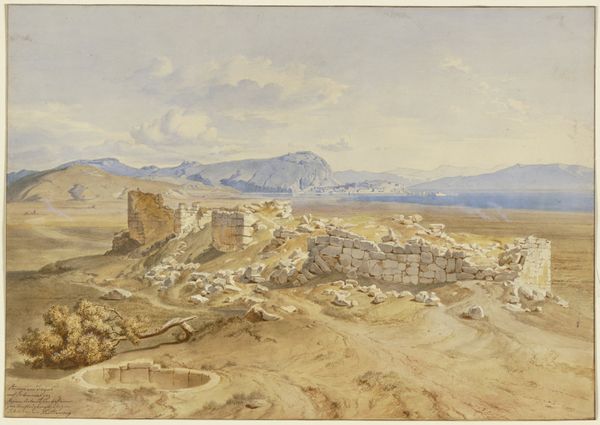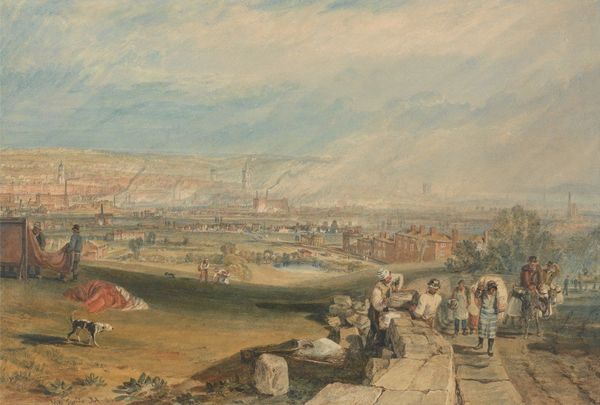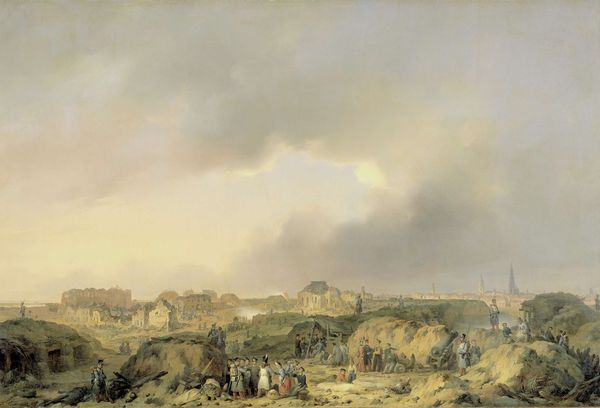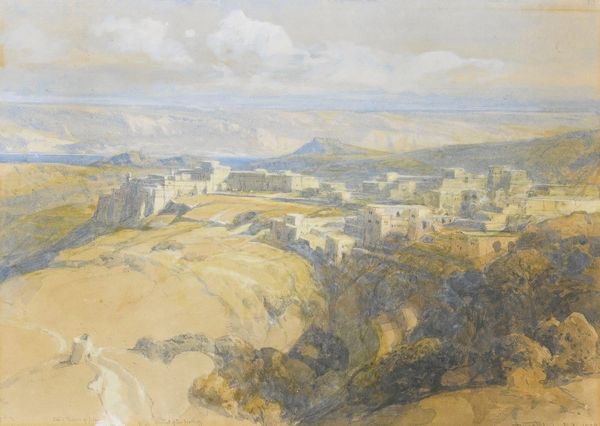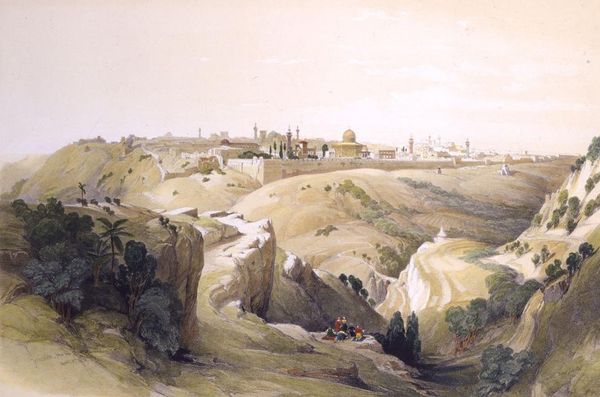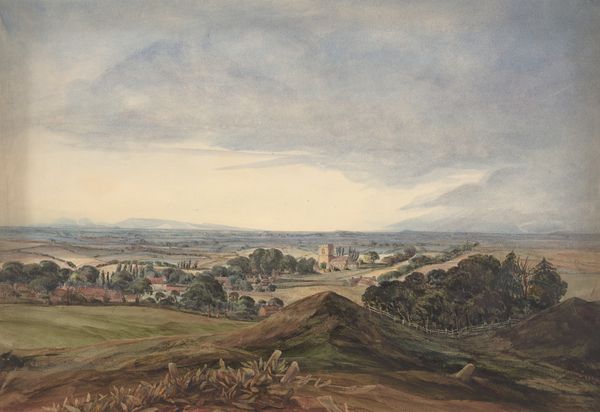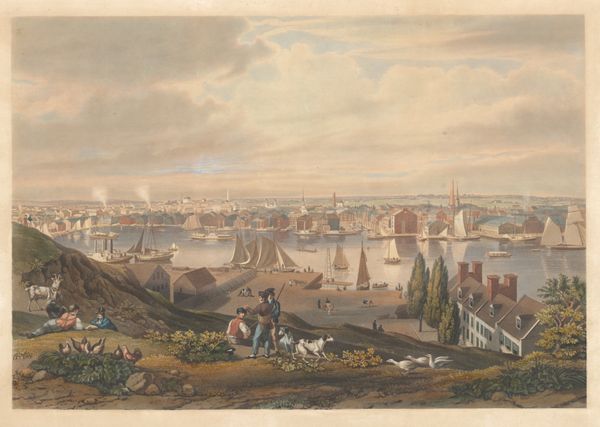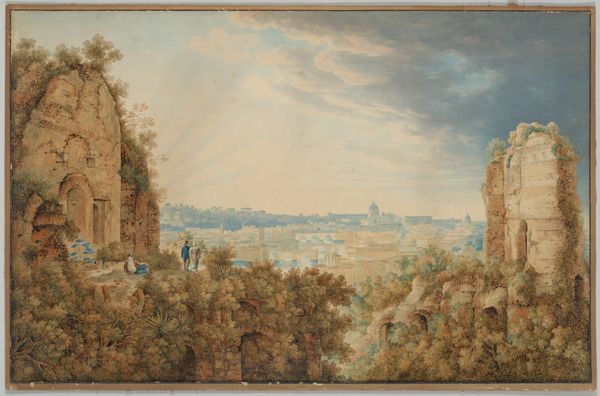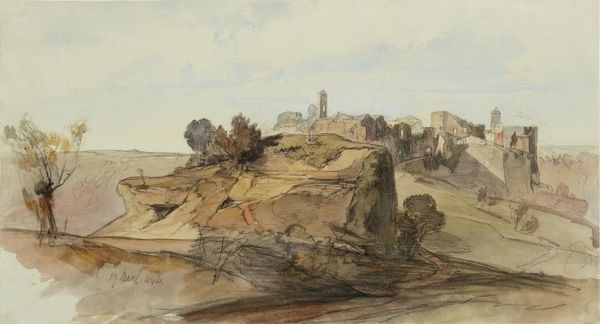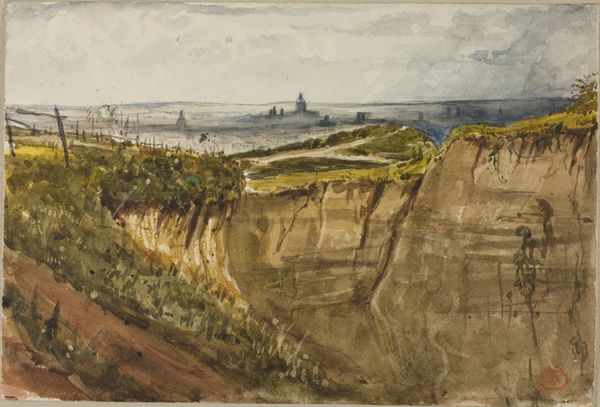
drawing, print, gouache, plein-air, paper, watercolor
#
drawing
# print
#
gouache
#
plein-air
#
landscape
#
paper
#
watercolor
#
romanticism
#
cityscape
#
watercolour illustration
Dimensions: 315 × 483 mm
Copyright: Public Domain
Curator: What a dreamy scene! We're looking at Paul Huet's "View of Avignon (from Villeneuve les Avignon)," which was created sometime between 1823 and 1869. It's currently housed at the Art Institute of Chicago. Editor: My first impression is a soft, hazy light blanketing this city. It's painted with watercolor and gouache, it seems, giving it this beautifully diffused quality. It almost feels like looking at a memory. Curator: Exactly. Huet, deeply entrenched in Romanticism, used such landscapes to evoke powerful emotional responses. Notice the carefully placed architectural elements and figures against the backdrop of the Rhone river – he's setting a stage, isn't he? Editor: Yes, but also thinking about it practically— the gouache layered with watercolor creates real depth. And consider the portability! As a plein-air piece, this meant Huet was right there, engaging directly with the landscape. What choices were available, what materials? It informs the whole aesthetic. Curator: Absolutely, the work carries its context with it. Looking at Avignon during this period, we see a city grappling with its medieval past while striving for modernization. The choice to paint it this way—from a distance, bathed in soft light— speaks to a desire to monumentalize the city's identity. Editor: I also find myself considering his technique. This layering would have been painstaking, but he has also given thought to economy—there’s an incredible efficiency of means. The buildings aren’t mere shapes; their material presence is evident, rendered through careful accumulation. Curator: I agree; it also places the art squarely in the context of artistic evolution. There’s the echoes of past masters, yes, but also, perhaps, a quiet nod towards a future break from traditional academic landscape painting, with that slightly heightened atmosphere. Editor: And we must consider his market as well: such depictions of both raw, beautiful natural elements, juxtaposed to the architecture, creates a valuable commodity that transcends artistic technique and inspiration alone. Curator: So, Huet gives us Avignon not as a map, but as a feeling, shaped both by the city's historical significance and emerging artistic trends. Editor: And all of that informed, even driven, by the choices in his means of production. Curator: A fitting example of how landscape becomes not just a visual, but an experience filtered through a historical and cultural lens. Editor: Precisely, by material investigation we find history!
Comments
No comments
Be the first to comment and join the conversation on the ultimate creative platform.
